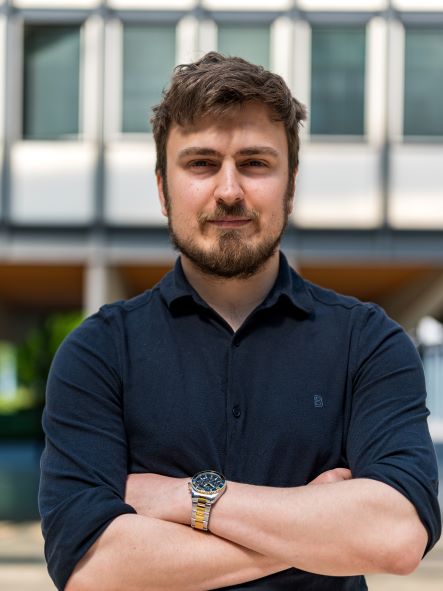
| Overview |  |
| ESR: | 12 |
| Title: | Bending and stretching to promote catalysis |
| Home Institution: | Dutch Institute for Fundamental Energy Research (DIFFER) |
| 1st Supervisor: | Gerard Van Rooij |
| Host Institution: | University of Liverpool (UoL) |
| 2nd Supervisor: | Xin Tu |
| Industrial Partner: | AFS |
| Industrial Contact: | Florian Brehmer |
Objectives
The objective is to demonstrate activation of chemical reactions at (catalytic) surfaces via vibrational excitation. The emphasis is on high, multi-quantum excitation, which is provided by the plasma phase. Focus is on the “most stable” molecules that are nevertheless highly attractive as reagents: CO2 (“free” source of carbon for green fuels, mitigating greenhouse gas emissions) and N2 (aiming at green fertilizer production). Two fundamentally different concepts are pursued:
1) High degrees of stretch vibration are converted into motion along the reaction path upon interaction with a surface to promote dissociative reaction (applicable to CO2 and N2)
2) High degrees of bending vibration prepare a transition state with increased electron affinity that promotes electron transfer between reagent and surface (CO2).
The concept will be implemented in a chemical looping approach. First hydrogen is dissociatively chemisorbed on the catalytic surface (e.g. Pd). In the subsequent phase, microwave and gliding arc plasma are used to excite CO2 or N2 that is directed to the H-loaded surface positioned in the plasma afterglow.
The host institute NWO-I provides microwave plasma discharge infrastructure and advanced diagnostics to in situ characterize species composition and vibrational excitation in the afterglow. Microwave plasma is known to promote vibrational excitation at subatmospheric pressures. In situ measurements, especially when coupled with pulsed operation of the plasma source, will reveal dynamics of the interaction and aid in elucidating the interaction on a molecular level
Links with other ESR
- ESR 2-4: Comparison of modeling results
- ESR 2, 11, 13: Comparison of efficiency of various plasma discharges
Expected Results
- Demonstration of activating surface reactions with vibrational pre-excitation
- Insight in vibrational excitation versus relaxation in dependence of operating pressure (plasma approach)
- Comparison of efficacy of stretching and bending vibrational modes
Secondments
- UoL: Extension of the research from the sub-atmospheric conditions investigated at the host institute to atmospheric conditions provided by gliding arc discharges. Emphasis will be on effluent measurements characterizing overall performance.
- AFS: Possibility and safety constraints of high power sources

